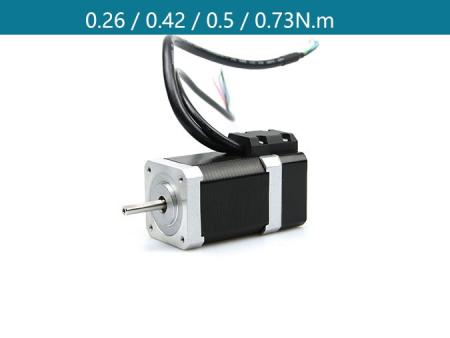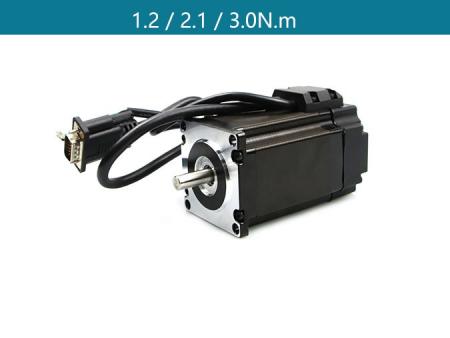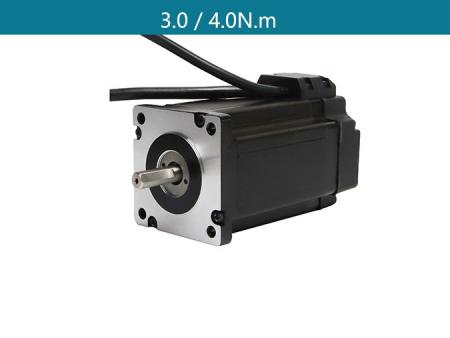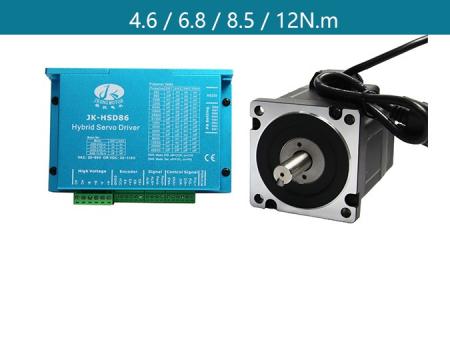In the world of precision motion control, closed loop stepper motors have emerged as a pivotal technology, blending the simplicity of stepper motors with the performance of servo systems. This article delves into the intricacies of closed loop stepper motors, their working principles, benefits, applications, and why they stand out in the realm of automation and robotics.
Stepper motors are a type of brushless DC motor that divides a full rotation into a number of equal steps. They are known for their ability to precisely control position without the need for feedback systems. Traditional stepper motors operate in an open-loop configuration, meaning they do not adjust based on feedback. However, while effective for many applications, open-loop stepper motors can encounter issues with missed steps and reduced torque at high speeds.
Stepper motors are a type of brushless DC motor that divides a full rotation into a number of equal steps. These motors are renowned for their ability to precisely control position without the need for a feedback system, making them ideal for applications requiring precise motion control.
Stepper motors operate by energizing coils in a specific sequence, which causes the motor shaft to rotate in discrete steps. The number of steps per revolution is determined by the motor's design. For instance, a typical stepper motor might have 200 steps per revolution, resulting in a step angle of 1.8 degrees. This precision allows for detailed control over motor movement.
There are two primary types of stepper motors: unipolar and bipolar.
1. Unipolar Stepper Motors: These have a center-tapped winding for each phase, allowing the current to flow through half of the winding at a time. They are easier to drive but typically offer lower torque.
2. Bipolar Stepper Motors: These have a single winding per phase, and the current must be reversed to change the direction of the magnetic field. Bipolar stepper motors are more complex to drive but generally provide higher torque and better performance.
· Precision: Stepper motors can achieve precise positioning and repeatability.
· Simplicity: They do not require feedback systems for basic operation.
· Cost-Effective: Generally, stepper motors are less expensive than servo motors.
· Torque Drop-off: Stepper motors lose torque as speed increases.
· Resonance Issues: At certain speeds, stepper motors can experience resonance, leading to vibration and noise.
· Heat Generation: Continuous current can cause heating issues.
A closed loop stepper motor system comprises several critical components that work together to provide precise control and feedback. Understanding these components is essential for appreciating how closed loop stepper motors function.
The stepper motor itself is the core component, designed to rotate in discrete steps. It can be either a unipolar or bipolar motor, depending on the application requirements. The motor’s construction includes multiple coils and a rotor that moves in small increments.
An encoder is a crucial component in closed loop systems, providing real-time feedback on the motor’s position. There are two main types of encoders used:
· Incremental Encoders: These provide relative position data by generating pulses as the motor shaft rotates. The number of pulses corresponds to the shaft's movement.
· Absolute Encoders: These provide absolute position data, offering precise information about the motor shaft’s position at any given moment.
The motor driver acts as the interface between the controller and the stepper motor. It receives control signals from the controller and converts them into electrical signals that drive the motor. In a closed loop system, the motor driver also processes feedback signals from the encoder to adjust the motor’s operation.
The controller is the brain of the closed loop system. It sends commands to the motor driver based on the desired position, speed, and torque. The controller continuously monitors feedback from the encoder to ensure the motor’s actual position matches the commanded position. It makes real-time adjustments to correct any discrepancies.
The power supply provides the necessary electrical power to the motor driver and other components of the closed loop system. It must deliver stable and sufficient power to ensure reliable motor operation.
In advanced systems, a communication interface allows for data exchange between the closed loop system and other devices or networks. This interface can use protocols such as USB, Ethernet, or CAN bus, enabling remote monitoring and control of the motor system.
 |  |  |  |
| Nema 17 closed lop stepper motor | Nema 23 closed loop stepper motor | Nema 24 closed loop stepper motor | Nema34 closed loop stepper motor |
Closed loop stepper motors, also known as servo stepper motors, integrate a feedback mechanism that continuously monitors the motor’s position. This feedback is typically provided by an encoder or resolver, which allows the system to correct any discrepancies between the commanded position and the actual position of the motor shaft. By doing so, closed loop stepper motors can achieve higher accuracy, improved torque performance, and greater reliability compared to their open-loop counterparts.
The core difference in closed loop systems lies in their feedback loop. Here’s a step-by-step breakdown of the process:
1. Command Input: The controller sends a command to the motor driver, specifying the desired position, speed, and torque.
2. Motion Execution: The motor driver translates these commands into electrical signals, driving the motor to the target position.
3. Position Feedback: The encoder attached to the motor shaft continuously monitors the position and sends this data back to the controller.
4. Error Correction: The controller compares the actual position data with the commanded position. If there is any deviation, it adjusts the input signals to correct the motor’s position in real-time.
This feedback loop ensures that the motor precisely follows the input commands, enhancing performance and efficiency.
Closed loop stepper motors offer several significant advantages over traditional open-loop systems:
The real-time feedback provided by encoders allows closed loop stepper motors to maintain high positional accuracy. This is crucial in applications where even the smallest deviation can lead to errors.
Closed loop systems can operate at higher speeds and deliver greater torque without the risk of losing steps. This makes them suitable for applications requiring dynamic performance and high-speed operations.
By continuously monitoring and correcting the motor’s position, closed loop systems reduce the risk of missed steps and stalling. This leads to greater system reliability and efficiency, as the motor can adapt to varying load conditions.
Closed loop stepper motors tend to generate less heat compared to open-loop motors because they only draw the necessary current to maintain position, rather than constantly operating at maximum current.
The ability to maintain precise control without complex calibration processes simplifies the integration of closed loop stepper motors into existing systems. This reduces setup time and costs.
closed loop stepper motors are widely used in various industries due to their versatility and performance benefits. Some common applications include:
In manufacturing and assembly lines, closed loop stepper motors drive precision machinery, ensuring accurate and repeatable movements essential for quality control.
Robotic systems, particularly those used in medical and laboratory environments, rely on closed loop stepper motors for precise positioning and movement control.
Computer Numerical Control (CNC) machines utilize closed loop stepper motors to achieve high precision in milling, cutting, and 3D printing tasks.
In the packaging industry, closed loop stepper motors control the movement of conveyor belts, labeling machines, and other equipment that require precise motion.
Textile machines use closed loop stepper motors to control the movement of fabrics and threads with high accuracy, improving the quality and consistency of the finished products.
closed loop stepper motors represent a significant advancement in motion control technology, offering a blend of accuracy, reliability, and efficiency. By integrating real-time feedback mechanisms, these motors overcome the limitations of traditional open-loop systems, making them ideal for a wide range of demanding applications.
View More(Total0)Comment Lists